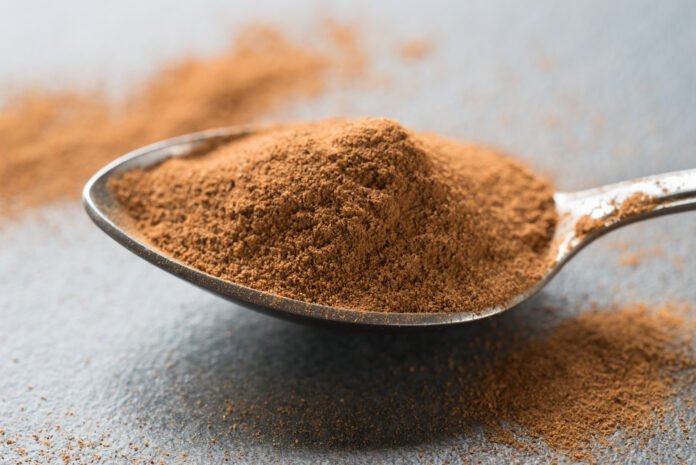Food safety scientists have issued a stern warning about lead contamination in ground cinnamon products, following a troubling study that has left many consumers concerned about their health. Recent tests conducted by Consumer Reports on 36 ground cinnamon products and spice blends uncovered that one-third of them contained lead levels surpassing New York’s safety threshold of 1 part per million. This threshold is the point at which a product should be recalled due to health risks.
The study’s findings have led to the inclusion of twelve cinnamon brands on a ‘never use’ list, highlighting the potential dangers associated with these products. James Rogers, PhD, who directs food safety research and testing at Consumer Reports, emphasized the severity of the issue. “If you have one of those products, we think you should throw it away,” Rogers stated. He warned that even minimal amounts of lead can accumulate in the body over time, posing serious health risks.
Lead, while naturally occurring in the environment, becomes a concern when it enters the food supply in harmful amounts. The discovery of elevated lead levels in commonly used spices such as cinnamon raises critical questions about how such contaminants make their way into everyday products. The implications of these findings are significant, as chronic exposure to lead is known to have severe health effects, including developmental issues in children and cardiovascular problems in adults.
The affected cinnamon products span a range of brands and types, underscoring the widespread nature of the contamination issue. For consumers, the immediate concern is determining whether their spice supplies are safe. Food safety experts recommend checking the list of affected brands released by Consumer Reports and, if necessary, discarding any products from those brands.
The issue highlights the need for stricter quality control measures and better regulatory oversight in the spice industry. Lead contamination in spices can stem from various sources, including contaminated soil, improper processing, or contamination during packaging. Addressing these sources of contamination is crucial to ensuring the safety of food products.
Consumers are advised to remain vigilant and take precautionary measures when purchasing spices. Opting for products from reputable brands and checking for quality certifications can help reduce the risk of exposure to contaminants. Additionally, staying informed through reports from trusted food safety organizations can help consumers make safer choices.
The study’s findings have also prompted a broader discussion about food safety standards and regulatory practices. As concerns about lead contamination in food products continue to grow, there is a call for increased transparency and rigorous testing to prevent such issues from recurring.
In the meantime, the public is urged to act on the information provided by Consumer Reports. Throwing away any products from the affected brands is a crucial step in protecting one’s health. For those who rely on cinnamon for its flavor and health benefits, seeking alternatives from brands not listed in the report may be a prudent course of action.
The lead contamination issue serves as a reminder of the importance of food safety and the need for ongoing vigilance in ensuring that the products we consume are free from harmful contaminants. As the situation develops, further updates and guidance from food safety experts will be essential in helping consumers navigate this concern and maintain their health.
The lead contamination issue has sparked a wave of concern among consumers and experts alike, highlighting the urgent need for reform in food safety practices. While the immediate recommendation is to dispose of the affected cinnamon products, the broader implications of this finding urge a re-evaluation of food safety standards across the industry.
The contamination of cinnamon with lead is particularly troubling given the widespread use of this spice in homes and commercial kitchens. Cinnamon is often added to a variety of dishes, from baked goods to savory meals, and is also popular for its health benefits. The presence of lead in such a commonly used ingredient raises questions about the safety of other spices and food products. It’s crucial for consumers to be aware that similar issues could affect other items in their pantries.
The discovery has also prompted calls for increased testing and monitoring of spices and other food products. Experts advocate for more rigorous screening procedures to detect contaminants early and prevent them from reaching consumers. Improved quality control measures during the production and packaging stages can help address the root causes of contamination and ensure that food products meet safety standards.
Additionally, the incident underscores the need for greater transparency from spice manufacturers and suppliers. Consumers should have access to detailed information about the sourcing and processing of their food products. This transparency can help build trust and allow consumers to make informed decisions about the products they purchase.
In response to the findings, some spice brands have already begun reviewing their quality control practices and implementing stricter testing protocols. However, the scale of the problem suggests that industry-wide changes may be necessary to prevent future contamination issues. Collaboration between regulatory agencies, food safety organizations, and manufacturers will be essential in developing and enforcing effective standards.
The situation also serves as a reminder of the importance of consumer advocacy and awareness. Organizations like Consumer Reports play a vital role in identifying potential hazards and informing the public. Their efforts in testing and reporting on food safety issues help protect consumers and drive improvements in industry practices.
For those affected by the recall, seeking refunds or replacements from retailers is a practical step. Many retailers offer returns or exchanges for recalled products, and consumers are encouraged to take advantage of these options to ensure their safety.
The lead contamination in cinnamon products highlights a critical aspect of food safety that cannot be overlooked. As consumers navigate this issue, staying informed and taking proactive measures are key to safeguarding their health. The hope is that this incident will lead to lasting changes in food safety practices, ultimately providing greater protection for consumers and ensuring the safety of the food supply.

